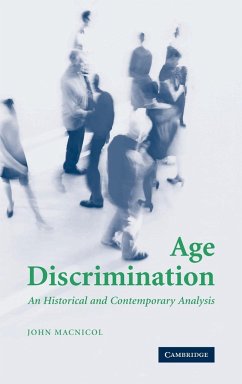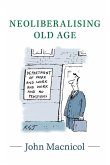A unique interdisciplinary analysis of the age discrimination debate in Britain and the USA.
Age discrimination is a highly topical issue in all industrialised societies, against a background of concerns about shortening working lives and ageing populations in the future. Based upon detailed research, and adopting an interdisciplinary approach, this unique study traces the history of the age discrimination debate in Britain and the USA since the 1930s. It critically analyses the concepts of ageism in social relations and age discrimination in employment. Case-studies on generational equity and health care rationing by age are followed by an analysis of the British government's initiatives against age discrimination in employment. The book then traces the history of the debate on health status and old age, addressing the question of whether working capacity has improved sufficiently to justify calls to delay retirement and extend working lives. It concludes with a detailed examination of the origins and subsequent working of the USA's 1967 Age Discrimination in Employment Act.
Review quote:
'The great virtue of John Macnicol's book is precisely that it forces the reader to question many of the assumptions that are often made in the debate about ageism, mandatory retirement and what the appropriate pensionable age should be - otherwise a book marked by wide-ranging scholarship and careful analysis.'
Journal of Public Policy
Table of contents:
List of tables; Acknowledgements; Part I. Ageism and Age Discrimination: 1. Analysing ageism and age discrimination; 2. Justice between generations; Part II. The Current Revival of Interest in Britain: 3. New Labour and age discrimination; Part III. Retirement, Health Status and 'Work Disability': 4. Health status and old age; 5. From the late nienteenth century to the 1940s; 6. The 1950s and 1960s in Britain; 7. The recent debate; Part IV. America's Age Discrimination in Employment Act: 8. The age discrimination debate, from the 1920s to 1967; 9. From 1967 to the present; 10. Conclusion.
Hinweis: Dieser Artikel kann nur an eine deutsche Lieferadresse ausgeliefert werden.
Age discrimination is a highly topical issue in all industrialised societies, against a background of concerns about shortening working lives and ageing populations in the future. Based upon detailed research, and adopting an interdisciplinary approach, this unique study traces the history of the age discrimination debate in Britain and the USA since the 1930s. It critically analyses the concepts of ageism in social relations and age discrimination in employment. Case-studies on generational equity and health care rationing by age are followed by an analysis of the British government's initiatives against age discrimination in employment. The book then traces the history of the debate on health status and old age, addressing the question of whether working capacity has improved sufficiently to justify calls to delay retirement and extend working lives. It concludes with a detailed examination of the origins and subsequent working of the USA's 1967 Age Discrimination in Employment Act.
Review quote:
'The great virtue of John Macnicol's book is precisely that it forces the reader to question many of the assumptions that are often made in the debate about ageism, mandatory retirement and what the appropriate pensionable age should be - otherwise a book marked by wide-ranging scholarship and careful analysis.'
Journal of Public Policy
Table of contents:
List of tables; Acknowledgements; Part I. Ageism and Age Discrimination: 1. Analysing ageism and age discrimination; 2. Justice between generations; Part II. The Current Revival of Interest in Britain: 3. New Labour and age discrimination; Part III. Retirement, Health Status and 'Work Disability': 4. Health status and old age; 5. From the late nienteenth century to the 1940s; 6. The 1950s and 1960s in Britain; 7. The recent debate; Part IV. America's Age Discrimination in Employment Act: 8. The age discrimination debate, from the 1920s to 1967; 9. From 1967 to the present; 10. Conclusion.
Hinweis: Dieser Artikel kann nur an eine deutsche Lieferadresse ausgeliefert werden.








